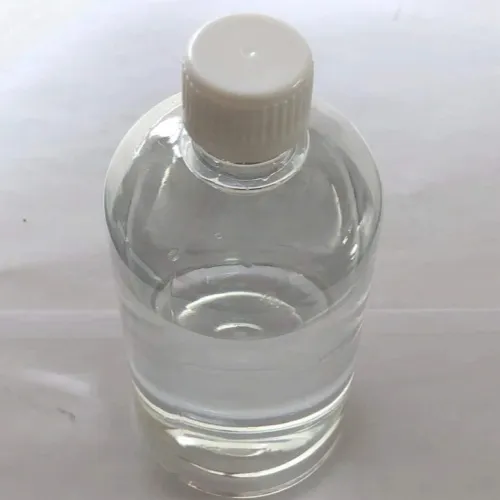Warning: Undefined array key "title" in /home/www/wwwroot/HTML/www.exportstart.com/wp-content/themes/1198/header.php on line 6
Warning: Undefined array key "file" in /home/www/wwwroot/HTML/www.exportstart.com/wp-content/themes/1198/header.php on line 7
Warning: Undefined array key "title" in /home/www/wwwroot/HTML/www.exportstart.com/wp-content/themes/1198/header.php on line 7
Warning: Undefined array key "title" in /home/www/wwwroot/HTML/www.exportstart.com/wp-content/themes/1198/header.php on line 7
- Afrikaans
- Albanian
- Amharic
- Arabic
- Armenian
- Azerbaijani
- Basque
- Belarusian
- Bengali
- Bosnian
- Bulgarian
- Catalan
- Cebuano
- China
- China (Taiwan)
- Corsican
- Croatian
- Czech
- Danish
- Dutch
- English
- Esperanto
- Estonian
- Finnish
- French
- Frisian
- Galician
- Georgian
- German
- Greek
- Gujarati
- Haitian Creole
- hausa
- hawaiian
- Hebrew
- Hindi
- Miao
- Hungarian
- Icelandic
- igbo
- Indonesian
- irish
- Italian
- Japanese
- Javanese
- Kannada
- kazakh
- Khmer
- Rwandese
- Korean
- Kurdish
- Kyrgyz
- Lao
- Latin
- Latvian
- Lithuanian
- Luxembourgish
- Macedonian
- Malgashi
- Malay
- Malayalam
- Maltese
- Maori
- Marathi
- Mongolian
- Myanmar
- Nepali
- Norwegian
- Norwegian
- Occitan
- Pashto
- Persian
- Polish
- Portuguese
- Punjabi
- Romanian
- Russian
- Samoan
- Scottish Gaelic
- Serbian
- Sesotho
- Shona
- Sindhi
- Sinhala
- Slovak
- Slovenian
- Somali
- Spanish
- Sundanese
- Swahili
- Swedish
- Tagalog
- Tajik
- Tamil
- Tatar
- Telugu
- Thai
- Turkish
- Turkmen
- Ukrainian
- Urdu
- Uighur
- Uzbek
- Vietnamese
- Welsh
- Bantu
- Yiddish
- Yoruba
- Zulu
ஜூலை . 23, 2024 14:37 Back to list
Exploring the Solubility Characteristics of Sodium Saccharin in Various Solutions and Conditions
Understanding the Solubility of Saccharin Sodium An Overview
Saccharin sodium, a widely used artificial sweetener, is often found in various food and beverage products as a sugar substitute. Its remarkable sweetness, estimated to be about 300 to 400 times sweeter than sucrose, has propelled its usage in diet foods and drinks, garnering attention for its low-calorie content. However, one of the most critical aspects of saccharin sodium that affects its application and effectiveness is its solubility.
Chemical Structure and Properties
Saccharin sodium is a sodium salt derived from saccharin, a compound discovered in the late 19th century. The chemical formula of saccharin sodium is C7H5NNaO3S. This structure contributes significantly to its properties, particularly its solubility. Solubility, defined as the ability of a substance to dissolve in a solvent, is fundamentally influenced by molecular interactions and the environmental conditions under which dissolution occurs. Saccharin sodium is known to be soluble in water, making it an ideal candidate for a range of liquid products, from soft drinks to liquid sweeteners.
Solubility in Water
The solubility of saccharin sodium in water is notably high, allowing it to integrate seamlessly into aqueous solutions. At room temperature, saccharin sodium has a solubility of around 1 gram per 3.2 mL of water, but this can vary with temperature changes. Generally, as temperature increases, the solubility of ionic compounds like saccharin sodium tends to increase as well. This property is advantageous when formulating products that require sweeteners to dissolve readily at various temperatures.
The dissolution process can be thought of as a two-stage event first, the solute molecules break free from their solid state, and second, they become surrounded by solvent molecules. Saccharin sodium's ionic characteristics facilitate these interactions, allowing it to dissolve readily when mixed with water.
Factors Affecting Solubility
saccharin sodium solubility

Several factors influence the solubility of saccharin sodium. Temperature is a pivotal factor; warmer water usually accommodates higher concentrations of saccharin sodium due to enhanced molecular movement. Additionally, the pH of the solution can impact solubility. Saccharin sodium displays higher solubility in neutral to slightly basic conditions, making it versatile in various food formulations.
Another aspect is the presence of other solutes in the solution, which can lead to phenomena such as common ion effect, wherein the solubility decreases due to the presence of a common ion. This can be significant in complex food systems, where saccharin sodium is used alongside other sweeteners or flavoring agents.
Applications and Implications
The solubility of saccharin sodium is pivotal for its application in the food industry. Its high solubility allows for the creation of concentrated sweetener solutions, which can be further diluted to achieve desired sweetness levels in beverages without imparting extra calories. This advantage positions saccharin sodium as a popular choice in the formulation of low-calorie products, contributing to dietary management for individuals seeking to reduce sugar intake.
However, it's essential to remain aware of potential health implications. While saccharin has been deemed safe for consumption by organizations such as the U.S. Food and Drug Administration (FDA), some consumers remain cautious due to its historical association with health concerns.
Conclusion
In conclusion, the solubility of saccharin sodium in water is a defining characteristic that enhances its usability and application in the food and beverage industry. With its unique properties influenced by various environmental factors, saccharin sodium presents a practical solution for creating low-calorie products. As the demand for healthier alternatives continues to rise, understanding the solubility and behavior of saccharin sodium remains crucial for manufacturers and consumers alike. The future of artificial sweeteners will undoubtedly rely on such fundamental properties and their interaction with modern dietary practices.
Latest news
-
Certifications for Vegetarian and Xanthan Gum Vegetarian
NewsJun.17,2025
-
Sustainability Trends Reshaping the SLES N70 Market
NewsJun.17,2025
-
Propylene Glycol Use in Vaccines: Balancing Function and Perception
NewsJun.17,2025
-
Petroleum Jelly in Skincare: Balancing Benefits and Backlash
NewsJun.17,2025
-
Energy Price Volatility and Ripple Effect on Caprolactam Markets
NewsJun.17,2025
-
Spectroscopic Techniques for Adipic Acid Molecular Weight
NewsJun.17,2025

